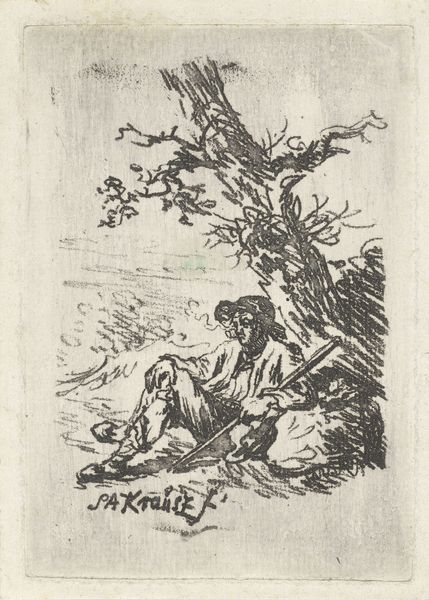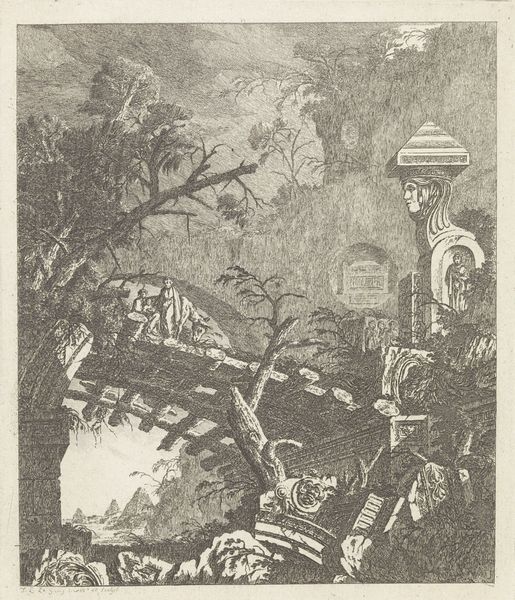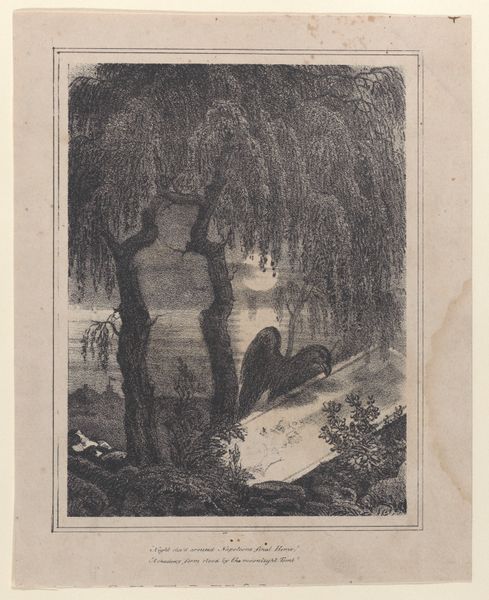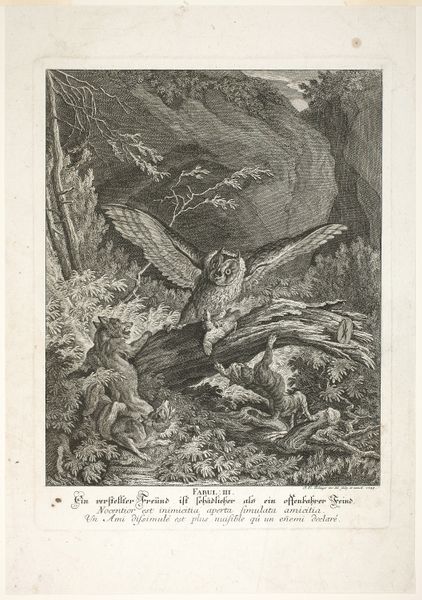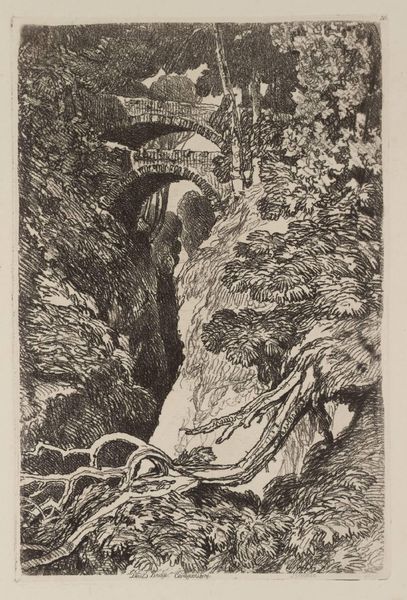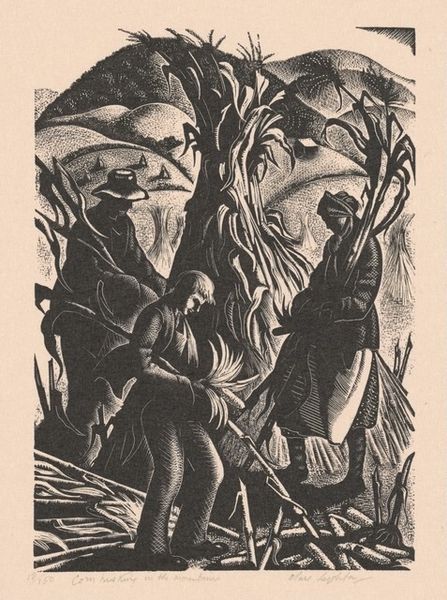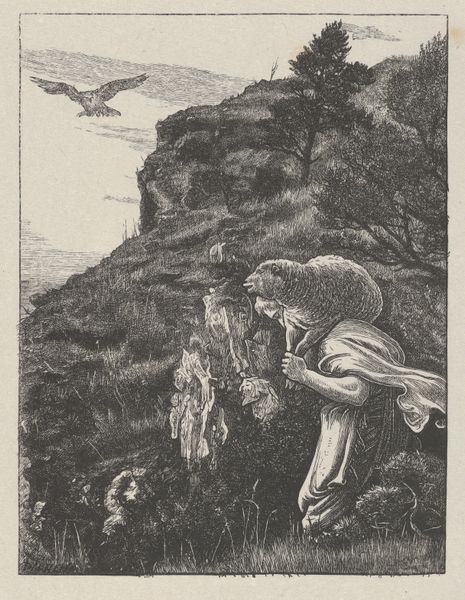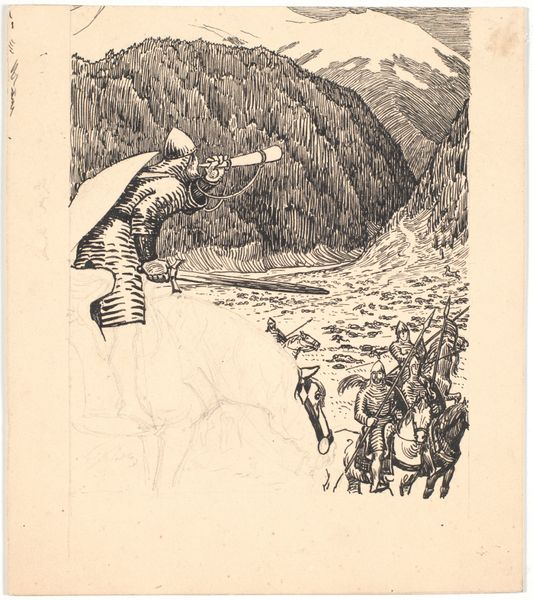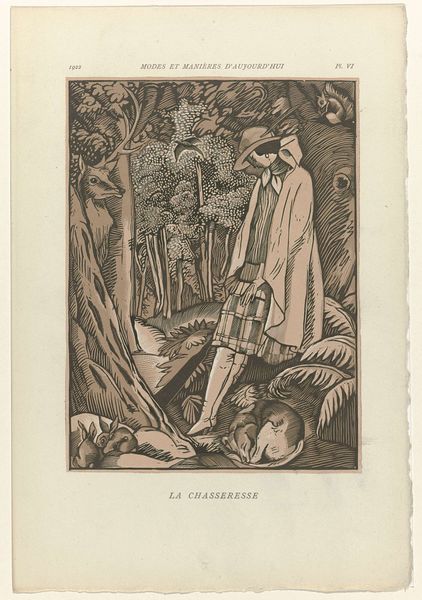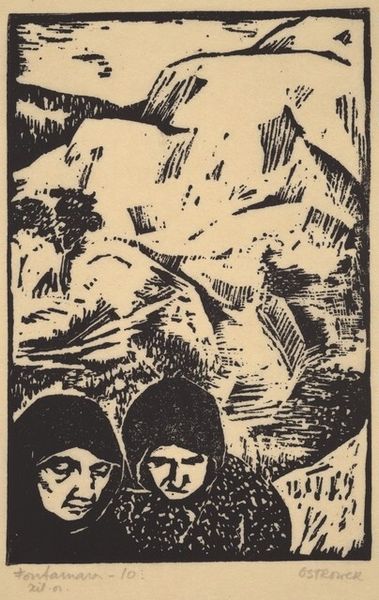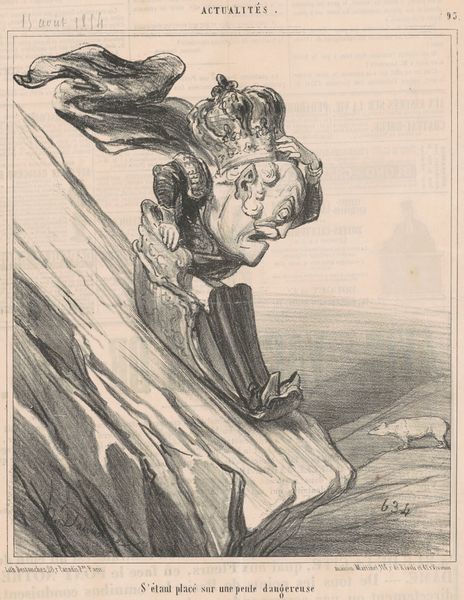
drawing, graphic-art, print, etching, intaglio, paper, engraving
drawing
graphic-art
etching
intaglio
landscape
paper
personal sketchbook
sketchwork
romanticism
line
engraving
Dimensions: Sheet: 11 5/16 × 7 9/16 in. (28.8 × 19.2 cm) Plate: 3 3/4 × 2 3/16 in. (9.6 × 5.6 cm)
Copyright: Public Domain
Editor: Here we have Alexandre Calame's "Title page for 'Trials at Etching'" from 1845. It’s an etching, quite small and detailed. My first impression is of dense woodland, almost claustrophobic, with the title carved into a stone, which feels quite...romantic, almost like a hidden message. What do you see in this piece, especially considering its context as a title page? Curator: Oh, it’s more than a mere title, isn't it? Calame wasn't just announcing a book; he was inviting us into his creative lair. See how the trees seem to guard the inscription? It whispers secrets, much like a secluded glade might confide in the wind. The density you mentioned isn’t accidental, I think. The "trials" of etching, the challenges, the frustrations—all mirrored in that thicket of lines, no? Tell me, does the way Calame intertwines text and landscape give you a sense of him wanting us to view art making itself as an organic, almost uncontrollable, force? Editor: I never thought about the density representing the difficulties! And I see what you mean about art making being uncontrollable. It’s like he’s suggesting the process is a struggle against nature itself. The title is *part* of the landscape, not separate from it. Curator: Precisely! It’s Calame grappling with nature, but through the equally unruly medium of etching. And do notice the slightly awkward lettering. Perhaps he’s winking at us, reminding us even masters stumble! The Romantic era was obsessed with untamed landscapes. Could Calame be using that to parallel with an equally untameable artistic creation? Editor: That's fascinating! I came in thinking this was just a title page, but it’s so much richer. Curator: Indeed! Hopefully next time we’ll all stumble through the wilderness of creativity together.
Comments
No comments
Be the first to comment and join the conversation on the ultimate creative platform.

